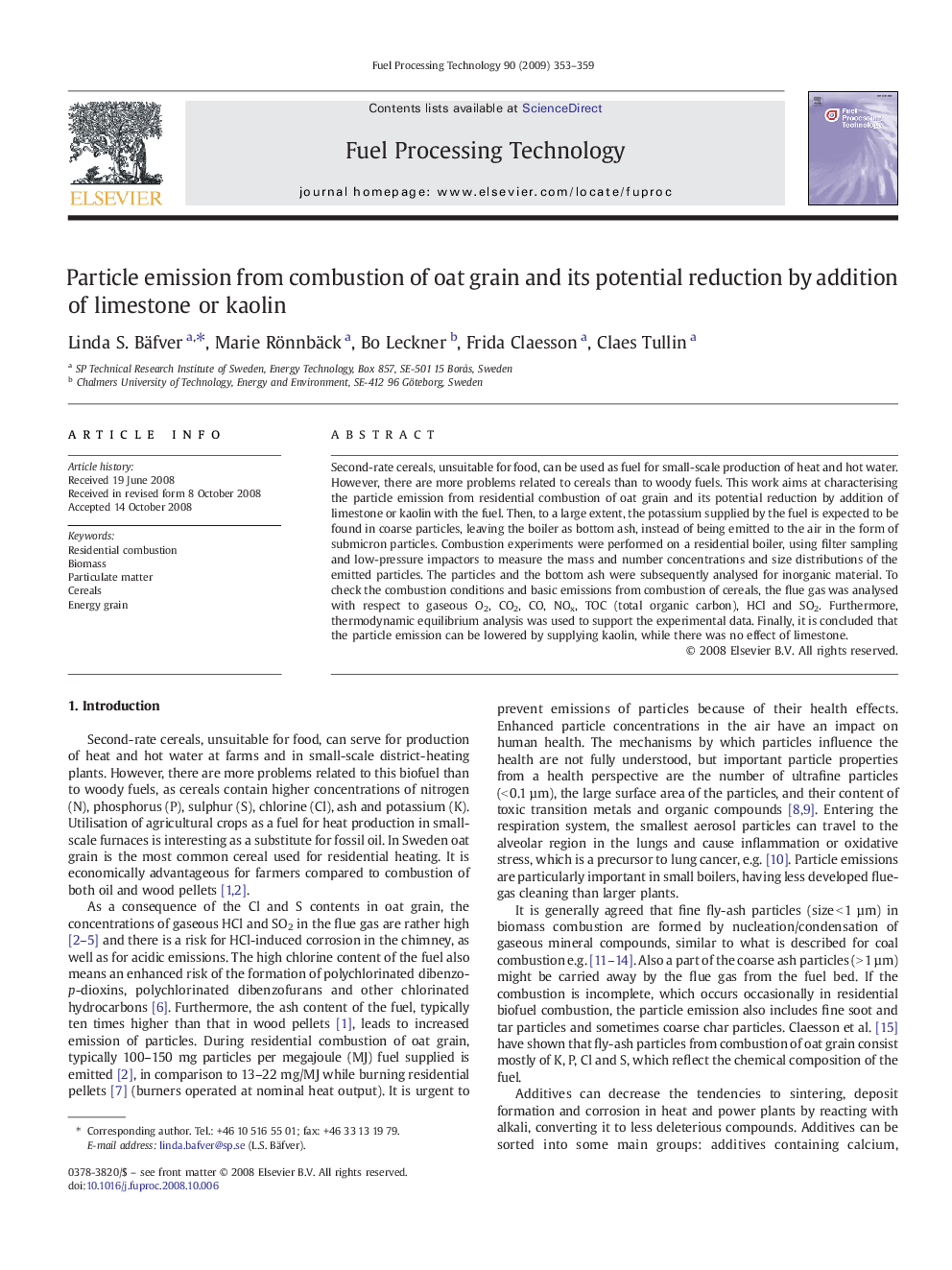| Article ID | Journal | Published Year | Pages | File Type |
|---|---|---|---|---|
| 211127 | Fuel Processing Technology | 2009 | 7 Pages |
Second-rate cereals, unsuitable for food, can be used as fuel for small-scale production of heat and hot water. However, there are more problems related to cereals than to woody fuels. This work aims at characterising the particle emission from residential combustion of oat grain and its potential reduction by addition of limestone or kaolin with the fuel. Then, to a large extent, the potassium supplied by the fuel is expected to be found in coarse particles, leaving the boiler as bottom ash, instead of being emitted to the air in the form of submicron particles. Combustion experiments were performed on a residential boiler, using filter sampling and low-pressure impactors to measure the mass and number concentrations and size distributions of the emitted particles. The particles and the bottom ash were subsequently analysed for inorganic material. To check the combustion conditions and basic emissions from combustion of cereals, the flue gas was analysed with respect to gaseous O2, CO2, CO, NOx, TOC (total organic carbon), HCl and SO2. Furthermore, thermodynamic equilibrium analysis was used to support the experimental data. Finally, it is concluded that the particle emission can be lowered by supplying kaolin, while there was no effect of limestone.
